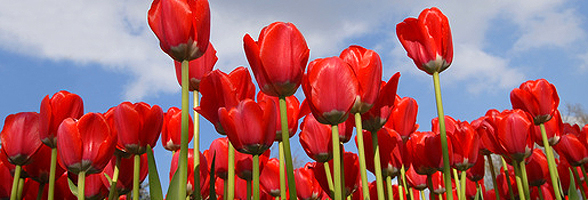
BIRDS AND BUTTERFLIES
Butterflies
By Linda Szramowski

The butterfly is a beautiful wonder of nature by any name. In French, the butterfly translates to "papillon," so melodic and beautiful. In Portugal, they are called "borboleta." If you hear someone call a butterfly a "Schmetterling," you are in Germany. A beautiful and melancholic one is "Farfalla," as it is called by Italians.
Butterflies pollinate flowering plants and serve as food for other organisms, thus forming an important link in the food chain. Populations have declined in recent decades, owing to increased pesticide use (especially herbicides); loss of fencerows; urbanization, and other destruction of habitat; and loss of caterpillar host and nectar plants. Managing your garden for butterflies can help conserve butterfly populations as well as greatly enhance a traditional garden.
The life of a butterfly is marked by four vastly different stages: egg, caterpillar, pupa, and adult. This life cycle may repeat as many as 5 times per season.
The mature butterfly deposits speck size eggs on carefully chosen specific plants. The egg hatches into a caterpillar, which immediately feeds on the leaf of the plant where it has hatched. In fact, rapid growth is the main objective of the caterpillar stage. You can see this reflected in the caterpillar's body structure--primarily a set of strong jaws for chewing and a digestive tract for processing food.
The caterpillar grows and molts, shedding its exoskeleton when that becomes too small. After four to six molts, the caterpillar pupates, or transforms. The new stage is termed the pupa, and the covering around the caterpillar is called a chrysalis (or cocoon, for moths). Protected inside the chrysalis, many of the caterpillar's body structures dissolve and reform into the distinctive butterfly shape.
Adult butterflies of most species emerge from the chrysalis 10 to 15 days later. Butterflies are cold blooded and must depend on their environment for heat. To fly, their body temperature needs to be greater than 75°F. On cooler days they often bask with outstretched wings on a rock or other flat surface to store up heat energy. The dark patterns on many butterfly wings help the insects absorb solar energy. On cloudy, cool, or windy days, most butterflies remain in protected spots. You are likely to spot them in warm, sunny, calm areas where flowering plants can supply the butterflies with nectar.
One thing you can do to promote the Monarch butterfly is to include the common wide leaf milkweed in your garden as the Monarch will only eat milkweed while in the caterpillar stage. Milkweed can easily be started from seed. Sow directly into your garden in a sunny spot during May and June. The caterpillar is a ravenous eater so it is recommended to have at least 6 plants so there will be enough food. The milkweed is perfectly happy growing in clusters, no need to thin. Once established it should come back year after year.